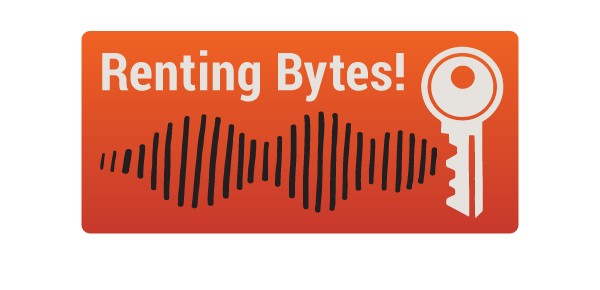Tenants’ guide to tax reform
21/06/2016
Housing affordability is a key issue during the 2016 federal election. The presumed impact of reducing tax concessions for landlords has been a strong feature in media discussions, and in commentary from political parties and candidates. Most of these focus on the cost of housing to buy.
But how do negative gearing and capital gains tax discounts affect the private rental market?
What is negative gearing?
An investor is negatively geared if the cost of holding an asset is greater than the income it generates. This occurs where an investor borrows money to purchase an asset, such as a rental property, and the income it produces doesn’t cover the cost of paying back the loan. Investments like this are made in the hope that the asset’s value will rise, and lost income will be rewarded with higher overall wealth.
For tax purposes, the losses that arise through a negatively geared investment are deductable against the income it generates. In Australia, losses on rental property investments are deductable against other income as well. This includes salaries and wages.
What is the Capital Gains Tax discount?
When an investor takes advantage of a rise in their asset’s value, by selling it at a profit, they pay Capital Gains Tax (CGT). This is paid on the difference between the amount they sell it for and the initial price they paid for it, minus some expenses.
CGT is payable on property investments. Exemptions apply to the “family home” and to property that has been used as an investor’s “main residence” within the six years prior to sale.
CGT is halved for any investment that has been held by an individual or small business for longer than 12 months – this is known as the CGT Discount. The CGT Discount applies to residential property, and most landlords pay CGT on only half their capital gains when they sell.
How do these tax concessions affect the housing market?
By allowing investment losses to be deducted against all income, and reducing liabilities for CGT, our tax system encourages Australians to enter into negatively geared investments. The housing market is seen as a safe investment for negative gearers, because of an expectation of continuing capital gains.
The largest part of the market – owner-occupiers – incurs no CGT liabilities upon sale at all. Their housing gains are not taxed like other forms of wealth, so they are prompted to divert spare financial capacity towards capital improvements. They do this by adding value to property through renovation, and/or spending more when upgrading. This increases the likelihood of capital gains across the market, and the expectation of perpetual gains encourages new entrants to pay more when buying in.
Landlords trade in the same market. The tax treatment of negatively geared investments enables them to manage larger debts than owner-occupiers, especially first homebuyers who have not already built up wealth through capital gains. Landlords who negatively gear can afford to pay more than other buyers for the properties they want, and are prepared to pay a premium for well-appointed and well-located properties that have high prospects for rapid capital gains.
How do these tax concessions affect the private rental market?
Proponents of Australia’s current tax settings suggest they increase the supply of housing and put downward pressure on rents by encouraging more investment in the housing market. They also suggest that without this investment, Australian governments would be left to make up the shortfall of affordable rental housing through their public housing systems.
It is true that the number of Australian landlords continues to grow, as does the amount of money they borrow in order to make their purchases. But the vast majority of this debt is used to trade already existing dwellings rather than build new homes, so it does not make a meaningful contribution to new housing supply.
And the cost of servicing this debt is greater than all other costs to landlords combined – even as record low interest rates have reduced the interest payable on loans during recent years.
All of this means that our current tax settings are well suited to anyone with residential property to sell, and/or money to lend. But they are doing a poor job of increasing housing supply, so arguments about their impact on rental affordability are completely undermined.
On the contrary, we know they’re not really keeping rents low at all. Negatively geared landlords favour more expensive properties with greater prospects for high capital gains. Properties at the affordable end of the rental market have been in steady decline over the last decade or so, while the number of properties for rent at higher prices continues to grow, because of the type of investments landlords are encouraged to make.
How do these tax concessions affect tenants?
Australia’s current tax settings affect high and moderate earning tenants by making it difficult for them to achieve home-ownership, keeping them in the rental market for longer. Landlords can take on higher levels of debt so they can afford to offer more for the properties they want than most first home buyers can. This has a general inflationary impact on prices too, and it has increased the difficulty for those who aspire to buy but are not yet able to. Would-be homeowners have to set themselves increasingly large savings targets in order to raise a deposit for a home loan.
Australia’s current tax settings affect tenants on lower incomes by reducing the number of affordable homes in the rental market, and increasing the number of people hoping to rent the ones that are available. Landlords tend to favour properties that have high prospects for quick capital gains, rather than low-end housing that could be let at affordable rents under long-term tenancy agreements. But where low-end housing is available there is no guarantee that low-income tenants will secure it, as they must compete for tenancies with higher earners who are hoping to minimise their housing costs.
Australia’s current tax settings affect all tenants by making the private rental market chronically insecure, because they encourage landlords to chase rapid gains rather than steady tenancies. They want to realise these capital gains when it suits them, and prefer not to limit their pool of prospective purchasers by selling with a sitting tenant. Tenancies are often brought to an end, and tenants forced to move, when landlords decide to offload their residential property investments.
What are the proposed reforms?
Both the Australian Labor Party and the Australian Greens have adopted policies to reform negative gearing and Capital Gains Tax discounts, raising housing affordability as a key issue for the 2016 federal election.
The Greens propose to end the current tax treatment of any negatively geared investment that is not a “business asset”, which means affected investors would only be able to claim losses against their relevant investment income. This reform would be grand-parented so that existing arrangements are not affected. The Greens would also phase out the CGT Discount over 5 years, by reducing the discount at a rate of 10% each year. These proposals focus on the budgetary impact – costed at $7.028billion in new tax revenue over four years – and The Greens would put this increased revenue towards the construction of new Social Housing.
Labor propose to limit the current tax treatment of negatively geared investments, to apply it only to newly built housing. Landlords who buy established dwellings would no longer be able to claim losses against their salaries and wages as well as their rental income. This reform would be grand-parented so that existing arrangements are not affected. Labor would also reduce the CGT Discount from 50% to 25% for “non-business assets” purchased after July 1 2017. These proposals focus on economic transition and budget reform. Costed at $32.1billion in savings over ten years, Labor says they would use the revenue raised through these reforms to “fund priorities”.
The Coalition does not propose to reform the tax treatment of negatively geared investments, or alter CGT discounts.
We have not conducted any analysis of minor- or micro-parties’ housing and tax related policies.
What would be the impact of the proposed reforms?
There have been many suggestions that reforms to negative gearing and CGT discounts would lead to an increase in rents, because it would reduce the level of investment in the housing market. This is unlikely. Proposed tax reform may have some impact on investors’ strategies, which would be a desirable outcome, but it would be unlikely to change the common preference for investment in residential property.
Significant demand for rental housing would continue, as home-ownership would remain out of reach for many households. Residential property would continue to attract capital gains, as owner-occupiers would remain exempt from CGT liabilities and would continue to make capital improvements to their homes.
But without preferential tax treatment of their negatively geared investments, landlords may be less inclined to take on the large amounts of debt that currently enables them to bid up the cost of housing. They may be less inclined to invest in housing based on the prospect of quick capital gains, and consider more closely the demand factors coming from the rental market itself. They may be more amenable to entering into stable, liveable and affordable agreements with tenants, rather than chasing quick capital gains.
Where can I get more information?
For more detailed information and commentary about the impact of Australia’s tax settings on tenants and rental housing, please visit: http://tunswblog.blogspot.com.au/search/label/Negative%20Gearing




